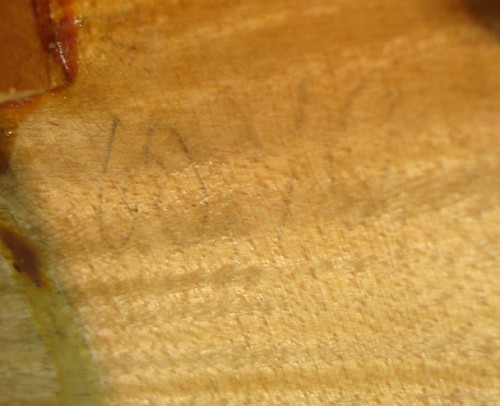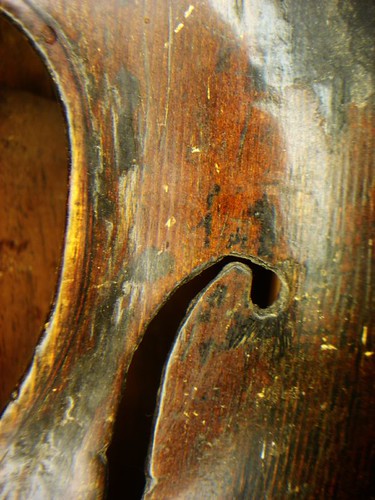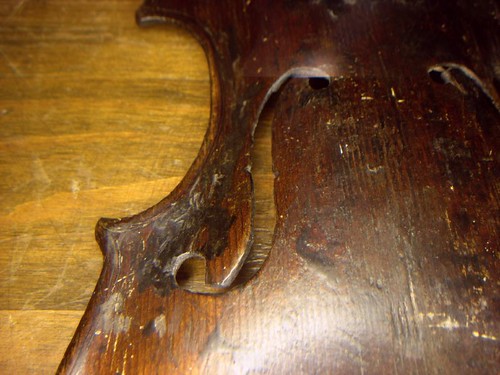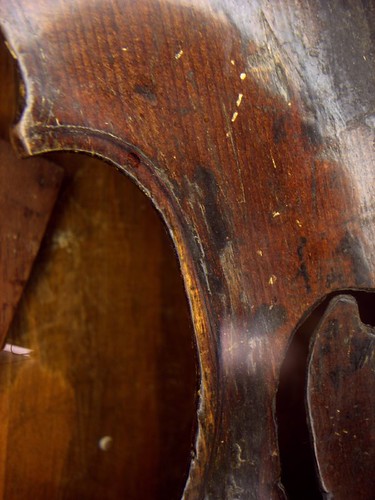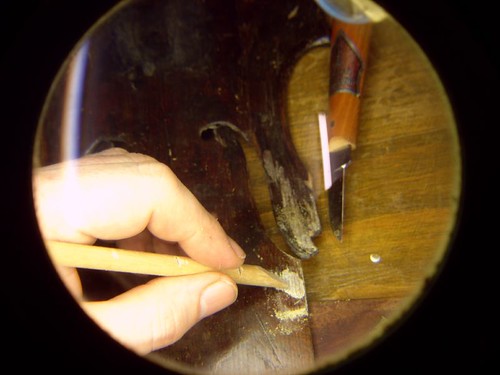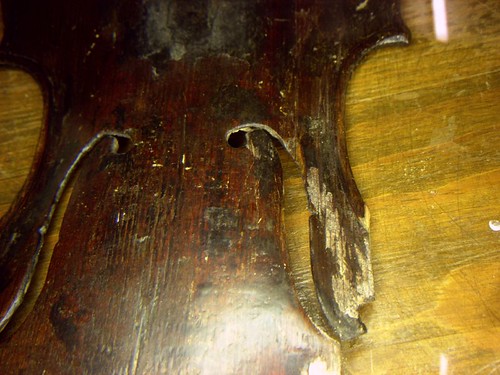The front has a crack that runs almost the whole length and the lower bout ribs are cracked at the block.
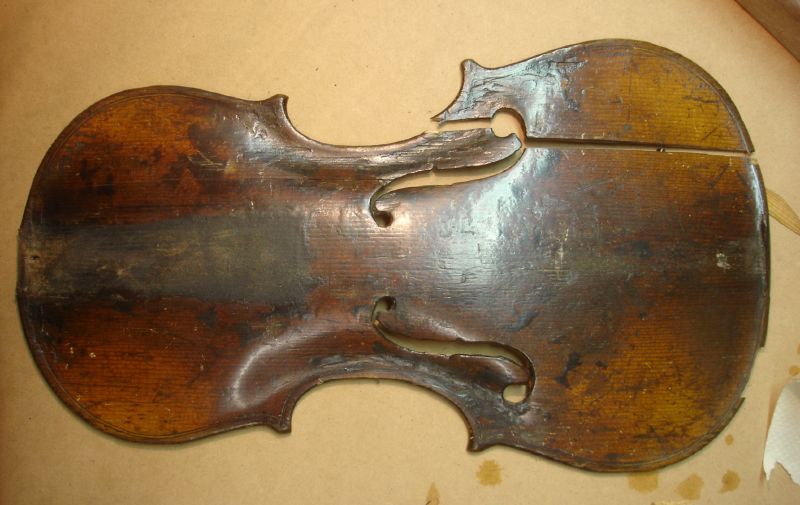
The bass bar is not original, this top probably has an integral bar when first built.

The linings appear to be feathered to nothing at the corners and blocks glued in over the top. The linings are therefore neatly tucked behind the blocks.
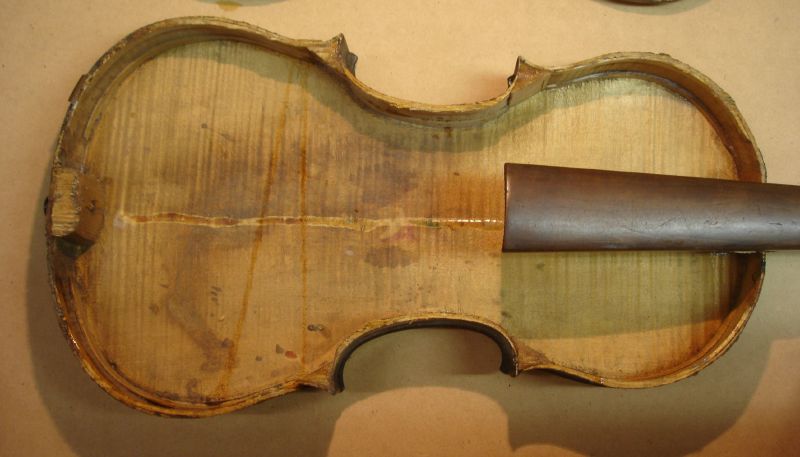
Underneath the thick black buildup of rosin the wood looks nice.
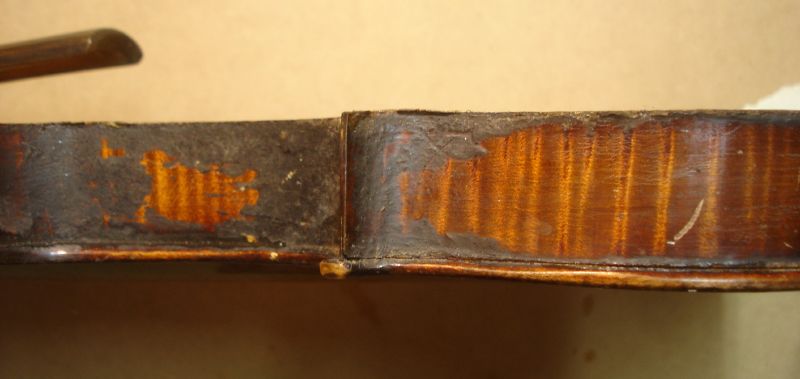
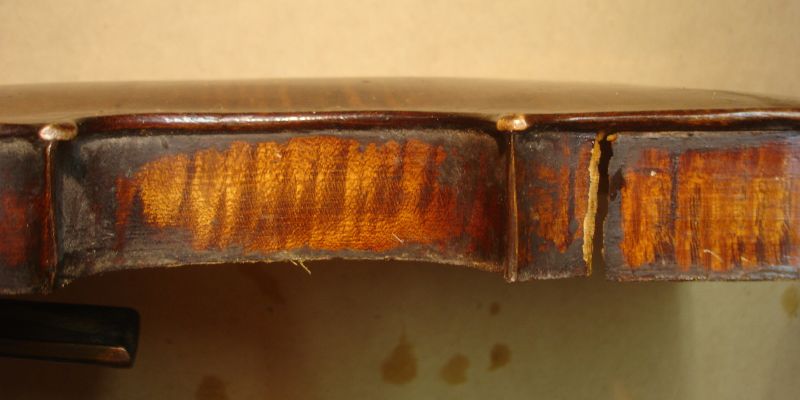
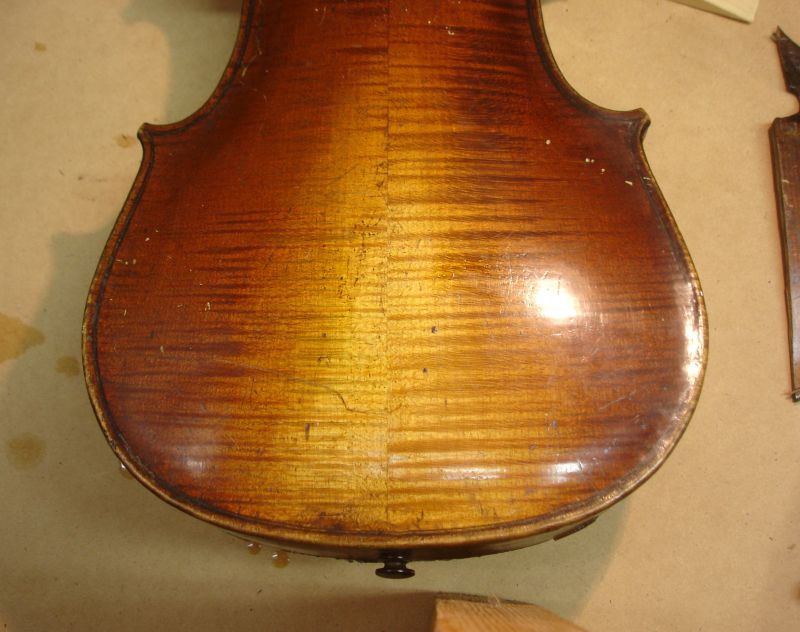
The inside has some odd hurried-looking gouge marks at the eyes of the FFs.

The crack in the rib is clean and won't be too much trouble, I hope.
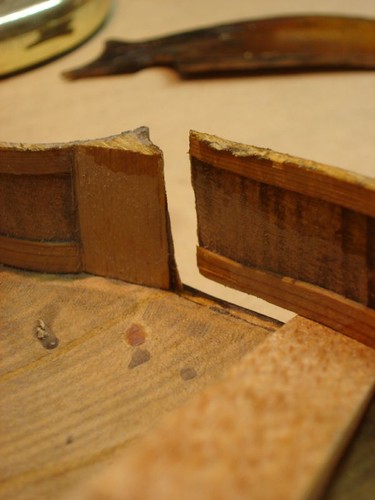
The only mark inside is a barely legible pencil scribble near the neck that looks like "60YO", a sure sign of a master instrument. Yeah, right.

There is no neck block. The neck runs right through and glued into the plates directly.
